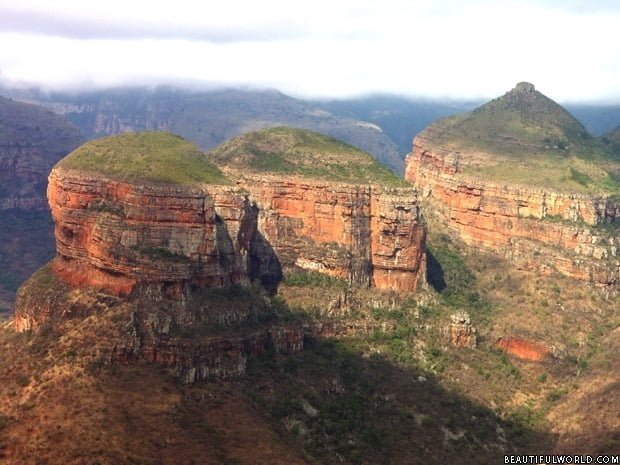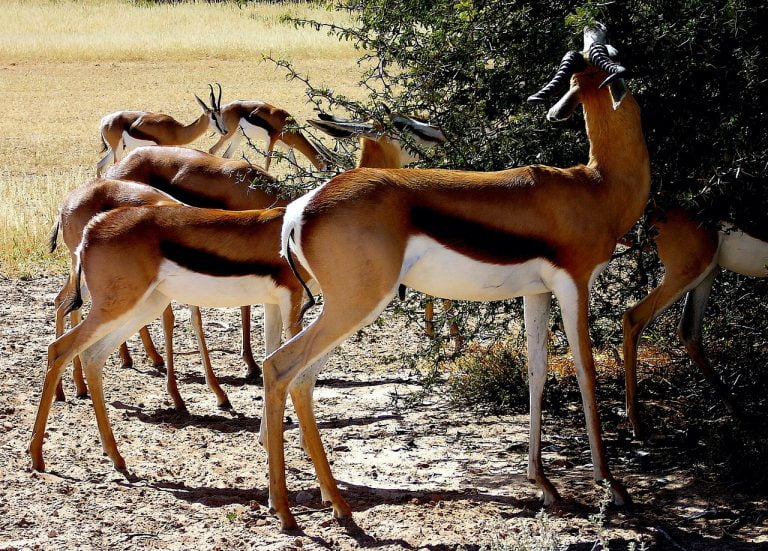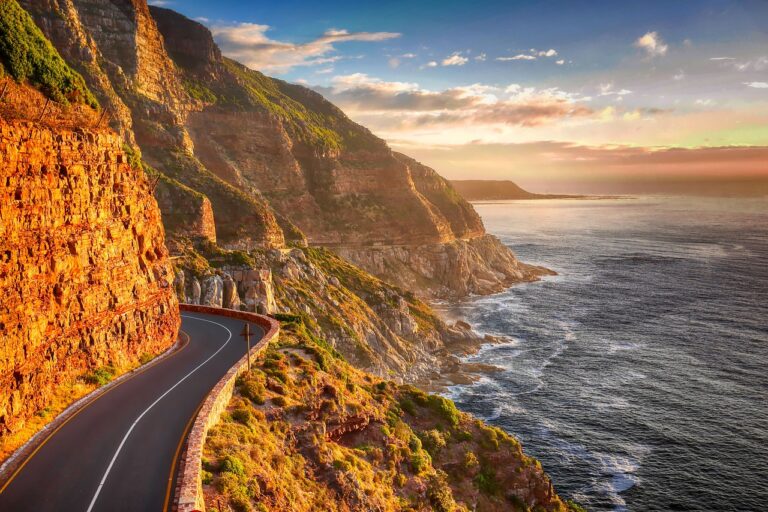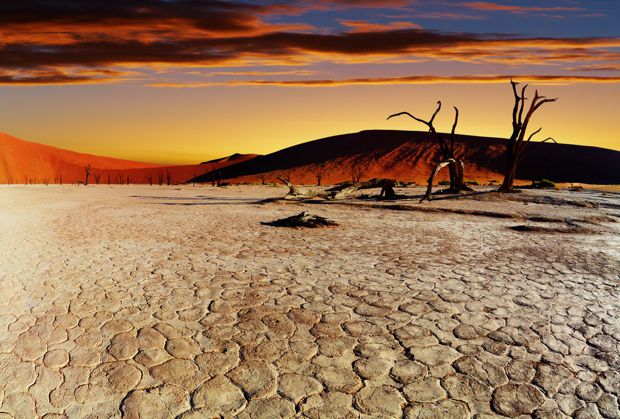South Africa’s Kruger National Park is one of the world’s largest “big five” game reserves. This frequently used description has its origins back in the days of the big game hunters when those engaged in the so-called “sport” of killing large animals came to regard certain animals as being particularly difficult to hunt on foot thereby making them highly prized as trophies. These animals were the elephant, lion, rhinoceros, leopard and Cape buffalo. Visitors to the Kruger National Park are likely to be able to see all of these magnificent animals but thankfully today’s hunters invariably do their shooting using cameras rather than guns.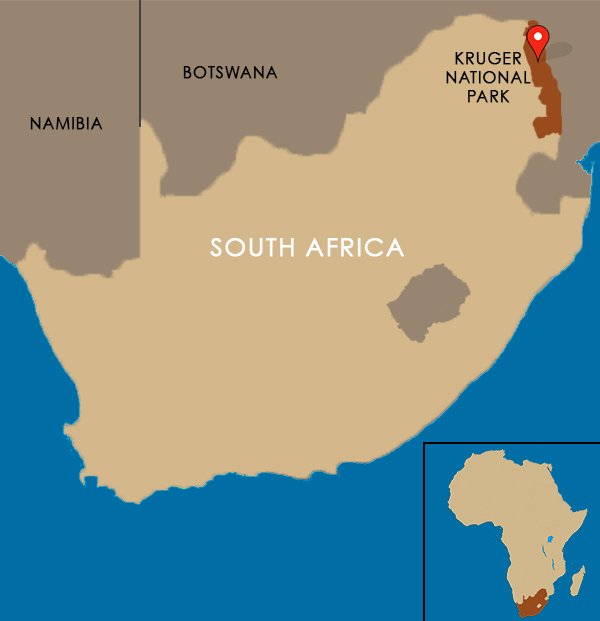
Kruger National Park Safari
The very word “safari” evokes a sense of excitement and today safaris are in many different parts of the world – but it is worth remembering that this word originally comes from the Swahili language which is widely spoken in southern and eastern Africa. The word “safari” simply means: “journey, expedition” but a modern-day safari promises to be an unforgettable experience and for most visitors to the Kruger National Park, it is considered to be an unmissable part of the trip.
The Kruger National Park can certainly be considered to be the true home of the safari. For many people, a safari may be seen as a way of ditching all of the comforts of modern-day life and really getting back to nature but a safari in the Kruger National Park really does not have to be too primitive and tours are available at all levels from the most basic tented sites to the most opulent luxury lodges.
The trips out to experience the incredible scenery and wildlife, usually referred to as “game drives”, are equally as flexible and may be arranged on a group or private basis usually in open all-terrain vehicles. Drivers, guides and even cooks may be included if desired. The duration of a safari is also fairly flexible with most operators offering trips of around four or five days stopping at lodges or tented sites. These tents are semi-permanent structures set on timber bases and they often include a good range of facilities. Shorter safaris are also available and, for those with little time to spare, it is even possible to enjoy a one-day safari with an experienced guide who can show some of the best sites for wildlife viewing in a limited time. Elephant rides are still available but these are now offered more as family entertainment rather than being a meaningful part of the safari experience.

In addition to the popular 4×4 mode of transport, safaris on foot should not be overlooked. Obviously, an experienced guide is needed and such safaris tend to utilise fairly basic tented accommodation but there is no better way of really getting to see some of the smaller and more elusive inhabitants of the park. The dangers of exploring on foot should not be overlooked but as long as you pay attention to your guide and don’t wander off you will be fine.
Having spotted the park’s famous “big five”, Kruger National Park’s “little five” may prove to be even more difficult to find. Borrowing parts of their names from their more famous large counterparts, these are the leopard tortoise, red-billed buffalo weaver, ant-lion, eastern rock elephant shrew and the rhino beetle. There are of course hundreds of different animals to see including mammals, reptiles, insects and around 350 species of birds.
Kruger National Park Weather

Hot weather is to be expected in any non-coastal part of Africa such as this. At times the weather is typically tropical as Kruger National Park is at a latitude of around 24 degrees south, straddling the Tropic of Capricorn. For large parts of the park, the climate is officially described as being sub-tropical. Its latitude means that, unlike equatorial regions, it does have true seasons with predictable variations in weather patterns. Winters tend to be dry and pleasantly warm with summers seeing most of the rain resulting in hot and humid conditions. Some visitors regard the middle of winter, which in the southern hemisphere is June and July, as being the best time to visit as, in addition to the more pleasant weather, the decrease in the levels of vegetation also means that the animals tend to be more concentrated around fertile areas such as watering points. A visit to Kruger National Park can really be enjoyed at any time of the year but it is probably worth remembering that the heavy rains normally arrive in late October.
Kruger National Park Map
Kruger National Park covers an area which is largely defined by geographical features. Its northern boundary is the Limpopo River which forms the boundary between South Africa and Zimbabwe to the north. The southern end of the park reaches the Crocodile River. To the east side of the park lies the Lebombo mountain range which is also the boundary between South Africa and Mozambique with the park’s western boundary running roughly parallel to that on its eastern side.
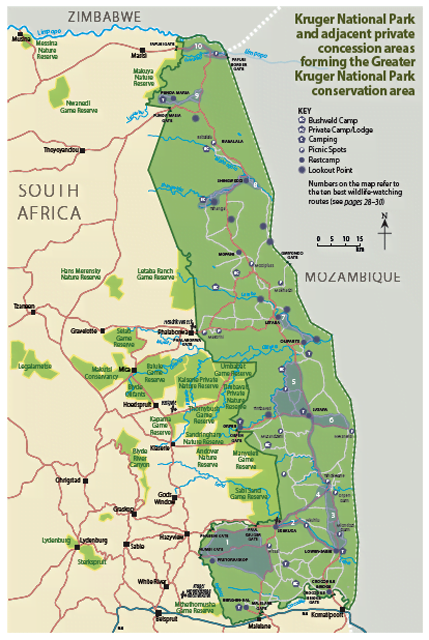
The Kruger National Park covers an area of approximately 19,455 sq. km. It is around 350 km in length (north to south) and an average of around 60 km wide (east to west). Access to the park is via one of the nine entrance gates which are as follows: Parturi, Punda Maria, Orpen, Phalaborwa, Malelane, Crocodile Bridge, Numbi, Kruger and Phabeni. The Kruger National Park comprises mainly of plains and is set at an altitude of between 260m and 440m above sea level. The park has four distinctive regions these being the far north, north, central and southern regions. The far northern region is the least visited offering the greatest degree of solitude.
Kruger National Park Accommodation
Kruger National Park offers a surprisingly varied range of accommodation. Bookings can be made online and various private operators offer complete packages. The accommodation may be in the form of bush lodges, campsites, rest camps, satellite camps, bushveld camps or overnight hides. There are even some lodges constructed in the traditional Tsonga style. Some of the luxury lodges and hotels are extremely opulent providing a very restful way of enjoying an African adventure and some operators have special facilities for honeymoon holidays. Kruger National Park certainly has the facilities to provide a dream holiday and memories that will last a lifetime.

Kruger National Park Malaria Risks
Visitors to this part of the world should take note that the Kruger National Park lies within a malaria region and, although many local people will say that the statistical risks of contracting this disease are small, it would be extremely foolhardy to ignore this threat. Malaria can be contracted at any time of the year but is most prevalent during the hot wet summers. The official malaria season is considered to be between the months of September and May. Avoiding being bitten by mosquitoes is, of course, preferable but despite taking all possible precautions, this may prove to be impossible. The use of suitable screens and nets may reduce the chances as will ensuring that skin is not exposed but these female mosquitoes are completely silent and have the ability to penetrate thin clothing. Repellents containing DEET are usually considered to be effective. Very effective malaria treatments are available but early recognition of the symptoms is essential. Travellers should take the advice of their own doctors and in most cases, a course of prophylactic medication is the only completely effective way to eliminate the risk. These medicines have improved greatly in recent years and now have far fewer potential side effects.
Kruger National Park Airport
Many visitors to Kruger National Park drive themselves but this usually involves a fairly long road journey often taking up most of a day, or night. There has been an increasing interest, especially from overseas visitors, in air travel and the park is served by several airports, the main one being the Kruger/Mpumalanga International Airport (KMIA). The other airports are: Skukuza, Phalaborwa and Hoedspruit. There are regular flights from Johannesburg, Cape Town and Durban. Car hire and bus shuttle services to Kruger National Park are available at the airports.
The Future of Kruger National Park
Kruger National Park has been in existence since 1926 and has largely been successful in its aim of protecting the animal populations in this region. The great significance of this area has been recognised by UNESCO and the park now forms part of the Kruger to Canyons biosphere. For many years the park has been completely fenced but in 2002, it became incorporated in the Great Limpopo Transfrontier Park, along with Mozambique’s Limpopo National Park and Zimbabwe’s Gonarezhou National Park.

Such international protected areas are often referred to as “Peace Parks” and boundaries are removed allowing for the free movement of animals. Poaching has been a problem with the white rhino often being targeted. It is generally considered by poachers to be easy prey compared to its more ferocious black counterpart. In the past, elephants have also been killed but this has now largely subsided. The elephant population is certainly not endangered. The same cannot be said for the once plentiful African wild dog which now only exists in very small numbers. The Kruger National Park is a place of incredible wild beauty and there is evidence that our ancestors lived here as much as two and a half million years ago. Little seems to have changed on these wonderful African plains and long may they continue to be the true essence of Africa.



